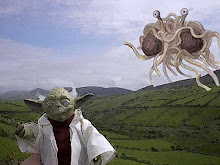Print version
MOSCOW, November 24 (RIA Novosti) - A leading Russian political analyst has said the economic turmoil in the United States has confirmed his long-held view that the country is heading for collapse, and will divide into separate parts.
Professor Igor Panarin said in an interview with the respected daily Izvestia published on Monday: "The dollar is not secured by anything. The country's foreign debt has grown like an avalanche, even though in the early 1980s there was no debt. By 1998, when I first made my prediction, it had exceeded $2 trillion. Now it is more than 11 trillion. This is a pyramid that can only collapse."
The paper said Panarin's dire predictions for the U.S. economy, initially made at an international conference in Australia 10 years ago at a time when the economy appeared strong, have been given more credence by this year's events.
When asked when the U.S. economy would collapse, Panarin said: "It is already collapsing. Due to the financial crisis, three of the largest and oldest five banks on Wall Street have already ceased to exist, and two are barely surviving. Their losses are the biggest in history. Now what we will see is a change in the regulatory system on a global financial scale: America will no longer be the world's financial regulator."
When asked who would replace the U.S. in regulating world markets, he said: "Two countries could assume this role: China, with its vast reserves, and Russia, which could play the role of a regulator in Eurasia."
Asked why he expected the U.S. to break up into separate parts, he said: "A whole range of reasons. Firstly, the financial problems in the U.S. will get worse. Millions of citizens there have lost their savings. Prices and unemployment are on the rise. General Motors and Ford are on the verge of collapse, and this means that whole cities will be left without work. Governors are already insistently demanding money from the federal center. Dissatisfaction is growing, and at the moment it is only being held back by the elections and the hope that Obama can work miracles. But by spring, it will be clear that there are no miracles."
He also cited the "vulnerable political setup", "lack of unified national laws", and "divisions among the elite, which have become clear in these crisis conditions."
He predicted that the U.S. will break up into six parts - the Pacific coast, with its growing Chinese population; the South, with its Hispanics; Texas, where independence movements are on the rise; the Atlantic coast, with its distinct and separate mentality; five of the poorer central states with their large Native American populations; and the northern states, where the influence from Canada is strong.
He even suggested that "we could claim Alaska - it was only granted on lease, after all."
On the fate of the U.S. dollar, he said: "In 2006 a secret agreement was reached between Canada, Mexico and the U.S. on a common Amero currency as a new monetary unit. This could signal preparations to replace the dollar. The one-hundred dollar bills that have flooded the world could be simply frozen. Under the pretext, let's say, that terrorists are forging them and they need to be checked."
When asked how Russia should react to his vision of the future, Panarin said: "Develop the ruble as a regional currency. Create a fully functioning oil exchange, trading in rubles... We must break the strings tying us to the financial Titanic, which in my view will soon sink."
Panarin, 60, is a professor at the Diplomatic Academy of the Russian Ministry of Foreign Affairs, and has authored several books on information warfare.
Perhaps it's just my suspicious nature, but, the article (to me, at least) - even allowing for the current economic chaos-cum-rathole that the US is experiencing - seems to be a blend of wishful thinking from an old aparatchik and practitioner of the art upon which he has written, i.e. "Information Warfare."
There are, of course, real problems with which to deal and there are also wide gulfs of belief and experience separating various factions of the US population. Is collapse and fragmentation of the nation - politically as opposed to economically - facing us in the very short run. Well, my crystal skull, oops... I mean "crystal ball" is cloudy today - or maybe it's just the shadow of a UFO overhead.
Somehow, I don't think we have reached "critical mass" yet for the explosion which would obliterate The United States of America. I could be wrong. Maybe the treasury's coup de etat
will prove to be the straw that broke the camel's back and we will soon see the "amero" coins in circulation and a different logo on the helmets of the military patrolling our cities and towns.
It remains to be seen, of course, but for all the people betting and/or investing in the imminent demise of the USA: Get a good hedge on that bet, you'll probably need it.



